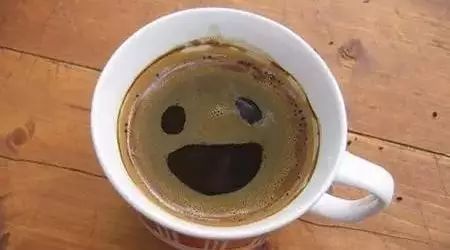
Actually, it's good to make life full of fun.
it's just an ordinary cup of coffee:
but because of the ingenious position of the holes in the foam, it looks like a smiling face.
this phenomenon is very common in people's lives. Washing machines can look like a face:
Microwave ovens can look like a face:
sockets can also look like a face:
in short, as long as you have a pattern similar to facial features, what does a human look like a face?
this phenomenon is called "pareidolia" by researchers. A recent study found that this illusion is not exclusive to humans.
the researchers showed rhesus monkeys pictures of objects that looked like faces (like the pictures below), pictures of objects that didn't look like faces, and faces of similar monkeys. It turned out that monkeys stared longer at objects that looked like faces than ordinary objects. Tracking their eyes also found that the monkeys focused on parts of the object like "eyes" and "mouths", similar to what they looked like when recognizing real faces. These clues suggest that monkeys, like humans, may have found faces that did not exist in these coincidental patterns.
so, how on earth did this phenomenon come about? Scientists are still studying the specific neural mechanism, but the reason for this phenomenon can be explained simply. These monkeys and humans are very social animals. Quickly discovering faces (especially similar faces) and interpreting each other's expressions (such as judging whether ta is hostile or not) in the natural environment is very important for our survival, so we need a highly sensitive face recognition system. And sometimes the sensitivity is too high, there will be a "false positive", that is, the original is not a face, or even a high degree of similarity to the real face as a face. But the cost of this "false positive" is much lower than that of missing a real face.
there is also a view that human "fantasy illusion" is related to exposure to more abstract cartoons, but monkey experiments show that it is not necessary to be exposed to human culture to form such an illusion. In fact, the same can happen with AI. You may have seen the report of google artificial neural network learning to draw, and many of the paintings have more mysterious animal patterns than the original image, which can also be seen as a similar example of over-recognition. There may be only a slight resemblance in the original image, but the requirement for the artificial neural network is "No matter what you see, draw more!" (Whatever you see there, I want more of it!), under such a requirement, various "false positive" brain complement patterns appeared in AI.
Be ready to buy yourself the elegant cheap white formal dresses and stand out in a crowd. Our magnificent garments will hugely boost your confidence.
(super magic …... )
although there is something wrong with the face recognition system, there is no risk of utopian misperception and it can bring fun to life. In fact, it is also quite good.
related report of new research: https://www.newscientist.com/article/2145286-monkeys-can-see-faces-in-inanimate-things-just-like-us/
original paper: http://www.cell.com/current-biology/fulltext/S0960-9822(17)30812-6